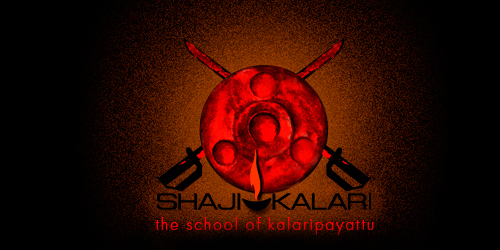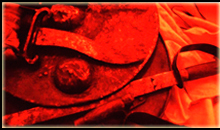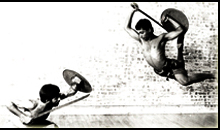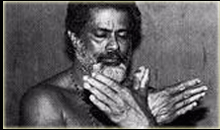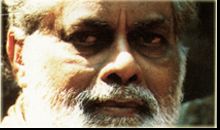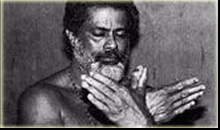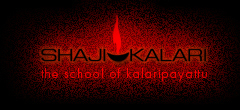Kalaripayattu, the vibrant traditional martial
art of Kerala, has been a part of the history and culture of Kerala from time immemorial. It is in Kerala that even today this art form retains all its intrinsic qualities unaltered. Kalaripayattu is considered as the 'Mother of all Martial Arts', its offshoots being martial art forms like Karate, Kun-Fu. Tai Chi, Silambam etc. Kalaripayattu thus forms a holistic base for the many of today’s performing artists.
The influence of Kalaripayattu is evident in the indigenous art forms of Kerala such as Kathakali, Kolkali, Teyyam, Poorakkali, Velakali etc. The basic movements in
Kalaripayattu are similar to certain Karanas as described in Bharata's Natya Sastra. Patanjali's Yoga Abhyasa forms a part of Kalaripayattu training. Kalaripayattu is suitable for anyone who is aware of the benefits of a healthy body and healthy mind. It boosts the energy and zeal of sportsmen, performing artists etc. The aim of Kalaripayattu is to qualify one overall, whose presence will benefit the family and society.
Kalaripayattu's origin in Kerala is traced back to the
mythological incident of the 6th avatar of Vishnu, Parashurama. Parashurama created the land now called Kerala by throwing his axe into the heaving sea; the water receded and the land of Kerala emerged. In order to protect the land and its people, He is said to have introduced this unique form of martial training. According to 'Keralotpatti', the traditional chronicle of Kerala, Parashurama initiated 108 Kalaris and donated swords to 36,000 Brahmins. Puranas says that basically Kalaripayattu was established as a strict social order.
The earliest record of defense mechanism is said to be in Dhanurveda. Dhanurveda deals with varieties of weapons and arms. It is one of the four
Upavedas. Dhanurveda is an upaveda of Yajurveda. 'Yajurvedasyopavedah dhanurveda udaahritah'. Dhanurveda mentions many of the weapons employed by the Kalaripayattu practitioner. For instance, the seven types of fighting that a warrior should practice and achieve proficiency in, according to the Dhanurveda
are: Archery, Discus, Spear, Sword and Shield, Dagger, Club and
Empty-handed.
Such practices are still adapted by the Kalaripayattu trainees even today. Research show that the prevalent style evolved during 12th century and evidences prove that Kalaripayattu was in practice at least a 1000 years.
